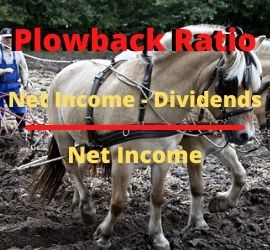What Is an Interest Floor Rate?
 An interest floor rate for interest-bearing securities is an agreement between the issuer and the investor that the floating rate of return will not fall below a specified floor level over an agreed period of time. For an adjustable-rate mortgage, it is the minimum interest rate possible over the life of the mortgage loan.
An interest floor rate for interest-bearing securities is an agreement between the issuer and the investor that the floating rate of return will not fall below a specified floor level over an agreed period of time. For an adjustable-rate mortgage, it is the minimum interest rate possible over the life of the mortgage loan.
A floor rate is an agreed-upon figure in the lower range of rates associated with a variable rate loan instrument or derivative. In derivative contracts and loan agreements, interest rate floors are used. This is in contrast to a maximum limit on interest rates or a cap. Generally, a floor rate is the lowest interest rate available on a variable-rate credit package. These floors are often employed in derivative agreements to ensure that the rate of return never falls below a specified threshold.
In the adjustable-rate mortgage (ARM) market, interest rate floors are often employed. An interest rate floor is often included when an ARM is issued since it prohibits interest rates from changing below a certain threshold. This minimum is often used up-front as a teaser rate to entice new customers. Later in the life of the loan, it is intended to at least pay any expenses related to the loan’s processing and servicing.
Interest Floor Rate – A Closer Look
Interest floor rates and ceiling rates are settings utilized by various market players. They are used to manage the risks associated with floating-rate loan products. In both settings, the contract buyer wants a payoff based on an agreed rate. In the event of an interest rate floor, the buyer demands reimbursement when the variable rate goes below the floor of the contract. This buyer is purchasing security against the borrower’s lost interest income if the variable rate drops. There are three main categories of interest rate derivative contracts:
- Floor rate – An interest floor rate is arranged when the buyer demands reimbursement when the variable rate goes below the floor of the contract. The buyer is purchasing security against the borrower’s lost interest income if the variable rate drops. Interest rate floor contracts are derivative instruments that are frequently purchased on market exchanges in the same way as put and call options are.
- Cap rate – An interest rate cap is essentially an insurance policy. The purchaser (borrower) pays a premium to a third party so that if the specified event occurs, the third party will cover the difference. For example, if the agreed-upon floating rate index raises interest rates above the rate or strike price. Interest rate caps are also derivative instruments that are frequently purchased on market exchanges in the same way as put and call options are.
- Swaps – Interest rate swap contracts need two independent companies to agree on the swapping of an asset. This often involves the exchange of fixed-rate debt for floating-rate debt
Floor Rate – Why Does it Matter?
Adjustable-Rate Mortgages – When a lender underwrites a variable-rate loan for a borrower, they are aware that the interest rate will fluctuate during the life of the loan. An interest rate floor is an agreement between a borrower and a lender that a variable interest rate would never go below a certain level. This reduces the lender’s risk on variable loan products and protects the loan from losing money.
Derivatives Markets – In a derivative contract, where a buyer gets payments at the end of each period, an interest rate floor is also commonly utilized. In this scenario, an interest rate floor is an agreement between the bank and the investor that a variable rate will never go below a specified threshold. It may assist investors in understanding their downside limit and determining how much risk they are willing to take on. In this case, the interest rate floor protects the investor against falling interest rates and lost revenue.
Example of an Interest Rate Floor Derivative Contract
Assume that an investor is securing a $1 million face value floating-rate bond. The investor is looking for protection against lost income that would arise if interest rates were to decline. As insurance, the investor buys an interest rate floor contract with an interest rate floor of 6%. The floating rate on the $1 million negotiated bond then falls to 5%. The interest rate floor derivative contract purchased by the lender results in a payout of $10,000. (($1 million x .06) – ($1 million x.05)). The payout to the holder of the contract is also adjusted based on days to maturity or days to reset which is determined by the details of the contract.
The Use of a Floor Rate in Adjustable Rate Loan Contracts
A minimum interest rate may also be an agreed-upon rate in a loan arrangement, such as an adjustable mortgage. The lender’s loan conditions include a minimum interest rate clause in the contract. Simply put, the rate is adjustable based on the agreed-upon market rate until it hits the interest rate floor. A loan with an interest rate floor provision has a minimum rate that the borrower must pay in order to safeguard the lender’s revenue.
If a borrower’s interest rate falls below a specific level, the lender may lose money on the loan. This is why ARMs include an interest rate floor. As a result, the lending contract may stipulate that the loan has a 3.5 percent interest rate floor. This implies that regardless of market conditions, the interest rate will never fall below 3.5 percent. This minimal rate safeguards the lender from suffering a large drop in earnings or losing money entirely.
Floor Rate with Annuities
To safeguard annuity owners against current rate declines, insurance firms establish minimum interest rates. These floor values ensure that the underlying investment funds will be credited with a minimum expected interest rate. Variable annuities lack the security of interest rate floors. However, they also don’t put cap limitations on the possible gains.
Fixed Annuities (FIAs)
The insurance company establishes a stated rate that is credited for the duration of the assured period. Traditional fixed annuities normally have a one-year duration, whereas multi-year guaranteed annuities have terms ranging from three to ten years.
Indexed Annuities
The performance of a stock market index is used to calculate interest. Most indexed annuities also allow you to direct a part of your premium to a pool of fixed assets. In such instances, the annuity employs both an indexed and a fixed method. The funds in the fixed pool generate interest in the same manner as typically fixed annuities do.
Variable Annuities
A variable annuity will not have a minimum guaranteed interest rate. However, some providers permit you to direct a part of your premium to a fixed account. In exchange, a variable annuity will have an infinite upside potential since interest is awarded depending on the success of the chosen assets. According to the Securities and Exchange Commission, “the money in the [variable] account will fluctuate based on the total premiums you pay, the amount of contract fees and expenditures, and the performance of the investment alternatives you choose.”
Up Next: What is a Swaption – Swap Option?
 A swaption, also known as a swap option, is an option to engage in a swap, such as an interest rate swap or another sort of swap. The buyer receives the right, but not the obligation, to enter into a specified swap agreement with the issuer on a specified future date in exchange for the option’s premium.
A swaption, also known as a swap option, is an option to engage in a swap, such as an interest rate swap or another sort of swap. The buyer receives the right, but not the obligation, to enter into a specified swap agreement with the issuer on a specified future date in exchange for the option’s premium.
A swap option is simply a kind of options contract. Like other options, it gives the holder the right but not the obligation to participate in a predefined swap contract. The holder of the swaption must pay a premium to the contract’s issuer in exchange for that right. A swaption typically refers to the right to engage in interest rate swaps. However, the term is also used with other sorts of swaps.
Swap options, unlike stock options and futures contracts, are not standardized. They are customized over-the-counter products. As a result, the buyer and seller must negotiate and agree on the specific details. For instance, the price of the swaption, the duration until the swaption expires, the notional amount, and the fixed or floating rates.




